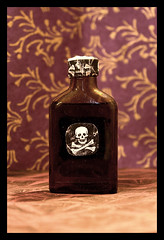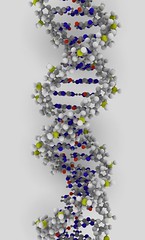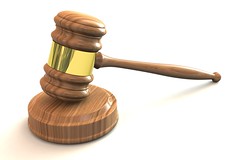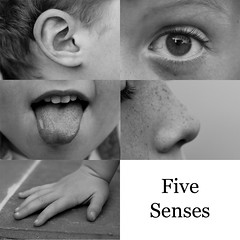| 8582592713 | Evidence | anything that tends to establish or disprove a fact. | | 0 |
| 8582592714 | Circumstantial evidence | evidence based on suggestion rather than personal knowledge or observation. | | 1 |
| 8582592715 | Questioned sample | Material collected from a known location but is of unknown origin. | | 2 |
| 8582592716 | Known Sample | material that comes from a proven or known source. | | 3 |
| 8582592717 | Coral Eugene Watts | Confessed serial killer, convicted on eye witness accounts. | | 4 |
| 8582592718 | Transient Evidence | evidence that is temporary, or easily changed. can be lost; warm car, footprints in snow | | 5 |
| 8582592719 | Conditional Evidence | produced by a specific action or event at the scene and must also be observed and recorded. | | 6 |
| 8582592720 | Testimonial Evidence | Evidence said in court by a competent witness | | 7 |
| 8582592721 | Physical Evidence | any object or material relevant in a crime. | | 8 |
| 8582592722 | Indirect | evidence providing only a basis for inference about the disputed fact. | | 9 |
| 8582592723 | Control | material that is similar to the questioned and unknown sample, used to validate the test method and procedure. | | 10 |
| 8582592724 | Probative Value | how useful something is to prove something in a trial. | | 11 |
| 8582592725 | Individual Evidence | Material that can be related to a single source. | | 12 |
| 8582592726 | Class Evidence | Material that can be associated with a group of items that share characteristics or properties. | | 13 |
| 8582592727 | Trace Evidence | materials that can be transferred during the action of a violent crime typically invisible to the naked eye. | | 14 |
| 8582592728 | Pattern Evidence | produced by direct contact between a person and an object or between two objects. | | 15 |
| 8582592729 | Probability | a way a forensic scientist can assess the likelihood of a specific event | | 16 |
| 8582592730 | Associative Evidence | evidence used to provide links between evidence and individuals involved in a crime; perfume scent or cigar small known to a certain individual. | | 17 |
| 8582592731 | Richard Craft | Killed his wife and convicted due to the findings of tissues, fibers, and hair. Was one of the first cases where a person was convicted without a body | | 18 |
| 8582592732 | Transfer Evidence | any evidential substance or particle such as blood, fluids, hairs, fibers, paint, and skin that is exchanged between an assailant and the victim or the scene of the crime | | 19 |
| 8582592733 | Hemoglobin | the oxygen carrier that gives red blood cells their color |  | 20 |
| 8582592734 | Chemiluminescence | the emission of light from a chemical reaction | 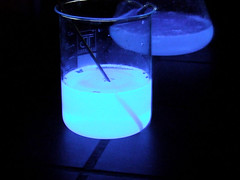 | 21 |
| 8582592735 | Precipitin Test | test that distinguishes between human and animal blood |  | 22 |
| 8582592736 | Serum | a liquid that separates from clotted blood |  | 23 |
| 8582592737 | Antigens | foreign substance in the body that are capable of causing disease |  | 24 |
| 8582592738 | Agglutinate | an allergic reaction where red blood cells clump together, usually in response to a particular antibody |  | 25 |
| 8582592739 | Antiserum | Human or animal serum containing antibodies that are specific for one or more antigens |  | 26 |
| 8582592740 | Serology | the laboratory study of body fluids using specific antigens |  | 27 |
| 8582592741 | Plasma | the fluid portion of blood, obtaining by centrifuging a sample of whole blood |  | 28 |
| 8582592742 | Erythrocytes | red blood cells |  | 29 |
| 8582592743 | Leukocytes | white blood cells |  | 30 |
| 8582592744 | ABO | a basic classification system for blood types based upon the reaction of antigens and antibodies |  | 31 |
| 8582592745 | Rh Factor | a basic blood factor, independent of ABO types |  | 32 |
| 8582592746 | Blood Factor | a specific combination of antigens, enzymes, and proteins in the blood |  | 33 |
| 8582592747 | Secretors | people whose blood type antigens are also found in other body fluids |  | 34 |
| 8582592748 | Angle of Impact | The acute angle formed between the direction of a blood
drop and the plane of the surface it strikes |  | 35 |
| 8582592749 | Arterial Spurting Pattern | Bloodstain pattern(s) resulting
from blood exiting the body under pressure from a breached artery |  | 36 |
| 8582592750 | Back Spatter | Blood directed back towards the source of energy or force
that caused the spatter. |  | 37 |
| 8582592751 | Blood Spatter Analysis | a field of forensic science that deals with the physical properties of blood and the pattern produced under different conditions as a result of various forces applied to the source of blood |  | 38 |
| 8582592752 | Bloodstain | Evidence that liquid blood has come into contact with a
surface |  | 39 |
| 8582592753 | Cast-off Pattern | A bloodstain pattern created when blood is released or
thrown from a blood-bearing object in motion |  | 40 |
| 8582592754 | Contact Stain | Blood deposited from direct contact between two surfaces, at least one of which is bloody |  | 41 |
| 8582592755 | Direction of Flight | The trajectory of a blood drop which can be established by its angle of impact and directionality angle |  | 42 |
| 8582592756 | Draw-back Effect | Blood in the barrel of a firearm that has been drawn
backward into the muzzle |  | 43 |
| 8582592757 | Drip Pattern | A bloodstain pattern which results from blood dripping into
blood |  | 44 |
| 8582592758 | Expirated Blood | Blood that is blown out of the nose, mouth, or a wound
as a result of air pressure and/or air flow which is the propelling force |  | 45 |
| 8582592759 | Flight Path | The path of the blood drop, as it moves through space, from
the impact site to the target |  | 46 |
| 8582592760 | Flow Pattern | A change in the shape and direction of a bloodstain due to
the influence of gravity or movement of the object |  | 47 |
| 8582592761 | Forward Spatter | Blood which travels in the same direction as the source
of energy or force which caused the spatter |  | 48 |
| 8582592762 | HVIS | A bloodstain pattern caused by a
high velocity impact /force to a blood source such as that produced by gunshot
or high speed machinery |  | 49 |
| 8582592763 | Impact Site | Bloodstain pattern created when blood receives a blow or force resulting in the random dispersion of smaller drips of blood |  | 50 |
| 8582592764 | LVIS | A bloodstain pattern that is caused
by a low velocity impact/force to a blood source |  | 51 |
| 8582592765 | MVIS | A bloodstain pattern caused by a medium velocity impact/force to a blood source |  | 52 |
| 8582592766 | Misting | Blood which has been reduced to a fine spray, as a result of the energy or force applied to it |  | 53 |
| 8582592767 | Parent Drop | A drop of blood from which a wave, cast-off, or satellite
spatter |  | 54 |
| 8582592768 | Passive Drop | Bloodstain drop(s) created or formed by the
force of gravity acting along |  | 55 |
| 8582592769 | Satellite Spatter | Small droplets of blood that are distributed around a drop or pool of blood as a result of the blood impacting the target surface |  | 56 |
| 8582592770 | Spine | The pointed or elongated stains which radiate away from the central
area of a bloodstain |  | 57 |
| 8582592771 | Swipe Pattern | The transfer of blood from a moving source onto an
unstained surface |  | 58 |
| 8582592772 | Target | A surface upon which blood has been deposited. |  | 59 |
| 8582592773 | Transfer Pattern | A bloodstain pattern created when a wet,
bloody surface comes in contact with a second surface |  | 60 |
| 8582592774 | Void | An absence of strains in an otherwise continuous bloodstain pattern |  | 61 |
| 8582592775 | Wipe Pattern | A bloodstain pattern created when an object moves through
an existing stain, removing and/or altering its appearance |  | 62 |
| 8582592776 | Anthropometry | The study of human body measurements. The word ___________ means man in Greek. |  | 63 |
| 8582592777 | Loop | Fingerprint pattern with one or more ridges entering from one side, curving, then going out on the same side it entered. If even one ridge exists on the same side, it is a ______. |  | 64 |
| 8582592778 | Delta | Triangular area found in all loop and whorl patterns. A _______ is shaped like the slit formation near the mouth of a river flowing into the sea. |  | 65 |
| 8582592779 | Core | Area found near the center of all loop and whorl patterns. The relative location of _____ and delta must be known for complete individual classification. |  | 66 |
| 8582592780 | Whorl | Fingerprint pattern found with at least two deltas and a core. A _____ can be subdivided into four groups. |  | 67 |
| 8582592781 | Arch | Least common and simplest fingerprint patterns. _____ have no delta or core. All ridges enter one side and exit the other. |  | 68 |
| 8582592782 | Fingerprints | An impression or mark made by a person's fingerprint on a surface. __________ cannot lie, but the analysis and identification are subject to error. |  | 69 |
| 8582592783 | Microns | One-millionth of a meter or one-thousandth of a millimeter. Fingers are so sensitive that a vibration with a movement of .02 _______ can be detected. |  | 70 |
| 8582592784 | Dactyloscopy | The study of fingerprints. The Greek word of ________ means finger. |  | 71 |
| 8582592785 | Latent print | Fingerprint made by the deposit of perspiration or body oils. ________ is invisible to the naked eye until developed. |  | 72 |
| 8582592786 | Ninhydrin | A biochemical reagent used to detect free amino and carboxyl groups in proteins and peptides. The resulting color of ________ is called Ruhemann's purple. |  | 73 |
| 8582592787 | Bifurcations | Common minutiae, shaped like a two-pronged fork. ___________ are good to use because they are easy to see and there are many of them. |  | 74 |
| 8582592788 | Minutiae | In descriptions of fingerprints, ridge characteristics. Some common __________ are dot and spur. |  | 75 |
| 8582592789 | Plastic print | Three-dimensional print made as indentations in soft material such as fresh paint, putty, or wax. ________ is also called an indented or molded print. |  | 76 |
| 8582592790 | Visible print | Fingerprint left by a finger that has touched blood, paint, ink, or the like. A __________ is left when a finger has touched colored material. |  | 77 |
| 8582592791 | Plain Arch | A fingerprint with an arch that is more flat. A __________ is more common than a tented arch. |  | 78 |
| 8582592792 | Tented Arch | A fingerprint with an arch that is more dramatic. A _________ is less common than a plain arch. |  | 79 |
| 8582592793 | Ulnar Loop | A type of loop. A _____________ is more common than a radial loop. |  | 80 |
| 8582592794 | Radial Loop | A type of loop. A ________ is less common than a ulnar loop. |  | 81 |
| 8582592795 | Accidental Whorl | A whorl where a print is too irregular to fall into any other group. ____________ make up about 10 percent of all fingerprints. |  | 82 |
| 8582592796 | Double Loop Whorl | Consist of two separate and distinct loop formations with two separate and distinct shoulders for each core. A __________ has two deltas and one or more ridges which make a complete circuit. |  | 83 |
| 8582592797 | Central Pocket Whorl | make one complete circuit which may be spiral, oval, circular or any variant of a circle. A ___________ has two deltas. |  | 84 |
| 8582592798 | Alphonse Bertillon | Suggested using certain body measurements as discriminating characteristics to identify habitual offenders. ____________________ first recommended recording 11 measurements. |  | 85 |
| 8582592799 | Henry Classification | A simplified version of the Galton's classification system. The _____________ was established by Edward Richard Henry. |  | 86 |
| 8582592800 | Hemoglobin | Composed of 4 globin protein chains; oxygen carrier that gives red blood cells their color. | | 87 |
| 8582592801 | Precipitin Test | Distinguishes between human and animal blood. | | 88 |
| 8582592802 | Plasma | Fluid portion of blood. | | 89 |
| 8582592803 | Leukocytes | Scientific name for white blood cells. | | 90 |
| 8582592804 | Rh Factor | Basic blood characteristic independent of ABO types | | 91 |
| 8582592805 | Secretors | People whose blood type antigens are also found in other body fluids. | | 92 |
| 8582592806 | Arterial spurting pattern | Blood stain patterns resulting from blood existing under high pressure in the body such as a breached artery. | | 93 |
| 8582592807 | Blood splatter analysis | Field of forensic science that deals with the physical properties of blood and patterns produced under different conditions. | | 94 |
| 8582592808 | Forward Spatter | Blood that travels in the same direction as the force that caused the spatter. | | 95 |
| 8582592809 | Parent Drop | Drops of blood that casts off a wave or satellite spatter. | | 96 |
| 8582592810 | Satellite Spatter | Small droplets of blood around a drop or pool of blood. | | 97 |
| 8582592811 | Swipe pattern | Transfer of blood from a moving source onto an unstained surface. | | 98 |
| 8582592812 | Transfer pattern | Blood stain pattern created when a wet, bloody surface comes in contact with a second surface. | | 99 |
| 8582592813 | Chemiluminesence | The emission of light from a chemical reaction. | | 100 |
| 8582592814 | Serum | liquid that separates from clotted blood. | | 101 |
| 8582592815 | Agglutinate | Allergic reaction where red blood cells clump together. | | 102 |
| 8582592816 | Serology | Study of body fluids using specific reactions. | | 103 |
| 8582592817 | Erythrocytes | Scientific name for red blood cells. | | 104 |
| 8582592818 | ABO | Blood classification system. | | 105 |
| 8582592819 | Angle of Impact | Acute angle formed between the direction of a blood drop and the surface it strikes. | | 106 |
| 8582592820 | Back spatter | Blood directed back towards the source of energy or force that caused the spatter. | | 107 |
| 8582592821 | Expirated blood | Blood that is blown out of the nose, mouth or a wound as a result of air pressure or air flow. | | 108 |
| 8582592822 | HVIS | Blood stain pattern caused by a high speed impact or force; | | 109 |
| 8582592823 | Spine | Pointed or elongated stains that radiate from a blood drop. | | 110 |
| 8582592824 | Void | An absence of stains in an otherwise continuous blood stain patter. | | 111 |
| 8582592825 | contact stain | | | 112 |
| 8582592826 | Fibers | Usually made up of many filaments twisted or bonded together to form a thread of yarn. | | 113 |
| 8582592827 | Textiles | Fabrics woven in distinctive pattern. | | 114 |
| 8582592828 | Generic | Related to an entire group or class of products. | | 115 |
| 8582592829 | Fabric | A cloth material made up of fibers woven or bonded together in a distinctive manner. | | 116 |
| 8582592830 | Filaments | Single strands of material. | | 117 |
| 8582592831 | Inorganic | Substance not composed primarily of hydrocarbons | | 118 |
| 8582592832 | Yarn | A continuous strand of fibers or filaments | | 119 |
| 8582592833 | Warp | The lengthwise of yarn in a weave | | 120 |
| 8582592834 | Weft | The crosswise of yarn or thread. | | 121 |
| 8582592835 | Blend | A fabric made up of 2 or more different types of fiber. | | 122 |
| 8582592836 | Polypeptide | A biochemical polymer formed by linking amino acids | | 123 |
| 8582592837 | Helix | A spiral arrangement ,like a corkscrew | | 124 |
| 8582592838 | Keratin | The main protein in hair | | 125 |
| 8582592839 | Plastics | Substances that flow under heat and pressure and can fold into many shapes | | 126 |
| 8582592840 | Catalyst | A small amount of substance that increase the rate of reaction without being used up. | | 127 |
| 8582592841 | Viscosity | The resistance of fluid to flow | | 128 |
| 8582592842 | Homopolymers | Polymers made up of one type of repeating unit. | | 129 |
| 8582592843 | Polyethers | A series of carbon atoms connected to oxygen atoms | | 130 |
| 8582592844 | Density | A physical property of matter | | 131 |
| 8582592845 | Becke line | A halo like shadow appearing around an object immersed in a liquid of a different refractive index. | | 132 |
| 8582592846 | Optical brighteners | Colorless dye that causes blue light to be reflected | | 133 |
| 8582592847 | Chromatography | the separation of a mixture by passing it in solution or suspension or as a vapor through a medium in which the components move at different rates. | | 134 |
| 8582592848 | Elute | To extract one material from another | | 135 |
| 8582592849 | Chromatogram | The record of chromatography separation | | 136 |
| 8582592850 | Retention factor | A ratio used to characterize and compare components of samples in liquid chromatography | | 137 |
| 8582592851 | Undulation | slight waviness in hair morphology. | | 138 |
| 8582592852 | Association | link between an unknown and known evidence | | 139 |
| 8582592853 | Exemplar | term used in forensics when the sample is from a known origin. | | 140 |
| 8582592854 | Telogen | Final phase of hair growth before hair falls out. | | 141 |
| 8582592855 | Anagen | period of growth in hair lasting from 3-5 years. | | 142 |
| 8582592856 | Medulla | the spongy interior core of hair that gives it flexibility; absent in some humans. | | 143 |
| 8582592857 | Interference Patterns | pattern that demonstrate the wave nature of light. | | 144 |
| 8582592858 | Catagen | intermediate period of growth in the hair cycle, lasting about 3 weeks or longer; hair is at a resting phase. | | 145 |
| 8582592859 | Polymer | A molecule consisting of many identical repeating units; can be naturally occurring or synthetic | | 146 |
| 8582592860 | False Positive | a test result that comes out positive when it should not. | | 147 |
| 8582592861 | Cuticle | tough, clear outside covering of a hair shaft. | | 148 |
| 8582592862 | Cortex | middle layer of the hair shaft that provides strength; comprises most of the hair's mass. | | 149 |
| 8582592863 | Questioned | term used in forensics when the sample is from an unknown origin. | | 150 |
| 8582592864 | Morphology | referring to the form and structure of an item. | | 151 |
| 8582592865 | Keratin | tough protein polymer made up of about 20 amino acids. | | 152 |
| 8582592866 | Melanin | a natural pigment in the skin; UV rays make it more concentrated. | | 153 |
| 8582592867 | Metabolite | a specific product of a substance formed by chemical processes in the human body. | | 154 |
| 8582592868 | Micro Meter | one millionth of a meter. | | 155 |
| 8582592869 | Locard Exchange Principle | there is always a cross transfer of evidence between suspect and victim or locale. | | 156 |
| 8582592870 | Criminalistics | The examination of physical evidence. | | 157 |
| 8582592871 | Evidence | Anything that tends to establish or disprove a fact. | | 158 |
| 8582592872 | Ballistics | The science that deals with the motion, behavior, and effects of its projectiles. | | 159 |
| 8582592873 | Odontology | Examination of bite marks and dental identification of corpses. | | 160 |
| 8582592874 | Pathology | Investigation of sudden, unexplained, or violent death. | | 161 |
| 8582592875 | Entomology | The study of insects. | | 162 |
| 8582592876 | Palynology | The study of pollen and spores. | | 163 |
| 8582592877 | Polygraphy | The use of the lie detector. | | 164 |
| 8582592878 | Statutory law | Legislative acts declaring, commanding, or prohibiting something. | | 165 |
| 8582592879 | Common law | The body of law made up of judicial opinions and precedents. | | 166 |
| 8582592880 | Stare decisis | To stand by the decision, meaning previous legal decisions are to be followed. | | 167 |
| 8582592881 | Civil law | Law that deals with noncriminal suits brought to protect or preserve a civil or private right or matter. | | 168 |
| 8582592882 | Criminal law | Regulation and enforcements of rights, setting the acceptable limits of conduct in society. | | 169 |
| 8582592883 | Misdemeanor | A minor crime, usually punished with a fine or confinement other than in prison. | | 170 |
| 8582592884 | Felony | A serious crime, punishable by more than one year of imprisonment up to execution. | | 171 |
| 8582592885 | Probable cause | Situation in which a reasonable and prudent person, viewing the available information, would conclude that a crime has been committed and that the suspect committed it. | | 172 |
| 8582592886 | Violation | A breach of a right, duty, or law. | | 173 |
| 8582592887 | Infraction | Violation of a rule or law that is not punishable by prison. | | 174 |
| 8582592888 | Elements | The specific factors or parts of crime. | | 175 |
| 8582592889 | Booking | A police procedure following arrest that records basic information about the suspect. | | 176 |
| 8582592890 | Miranda rights | Rights guaranteed by the Constitution that police must tell arrestees about. | | 177 |
| 8582592891 | Arraignment | The first act in a criminal proceeding, where the defendant is brought before the court to hear chargers and enter a plea. | | 178 |
| 8582592892 | Bail | Money put up to guarantee that the defendant will appear in court as directed. | | 179 |
| 8582592893 | Nolo contendere | In a criminal lawsuit, when a defendant neither admits or denies committing a crime but accepts punishment as though he or she is guilty. | | 180 |
| 8582592894 | Preliminary hearing | A hearing before a magistrate or a judge to determine whether a person charged with a crime should be held for trial. | | 181 |
| 8582592895 | Grand jury | A group of people sworn to inquire into a crime and bring accusations against the suspect. | | 182 |
| 8582592896 | Indict | To formally accuse a person of a crime. | | 183 |
| 8582592897 | Plea bargaining | An agreement in which a defendant pleads guilty to a lesser charge and the prosecutor in return drops more serious charges to avoid the cost and time of a trial. | | 184 |
| 8582592898 | Probative | In evidence law, tending to prove something. | | 185 |
| 8582592899 | Material | In evidence law, relevant and significant. | | 186 |
| 8582592900 | Hearsay | Testimony given by a witness who relates not what he or she heard or saw, but what others have said. | | 187 |
| 8582592901 | Expert witness | A person that is an expert in a subject that is usually technical, who may present his or her professional opinion without actually witnessing any occurrence relating to the case. | | 188 |
| 8582592902 | Frye standard | A test to determine the admissibility of scientific evidence. | | 189 |
| 8582592903 | Daubert ruling | Revision of the Frye standard for admissibility of expert scientific evidence. | | 190 |
| 8582592904 | Junk science | Theories based on flawed or untested hypothesis not derived from or tested by the scientific method. | | 191 |


















